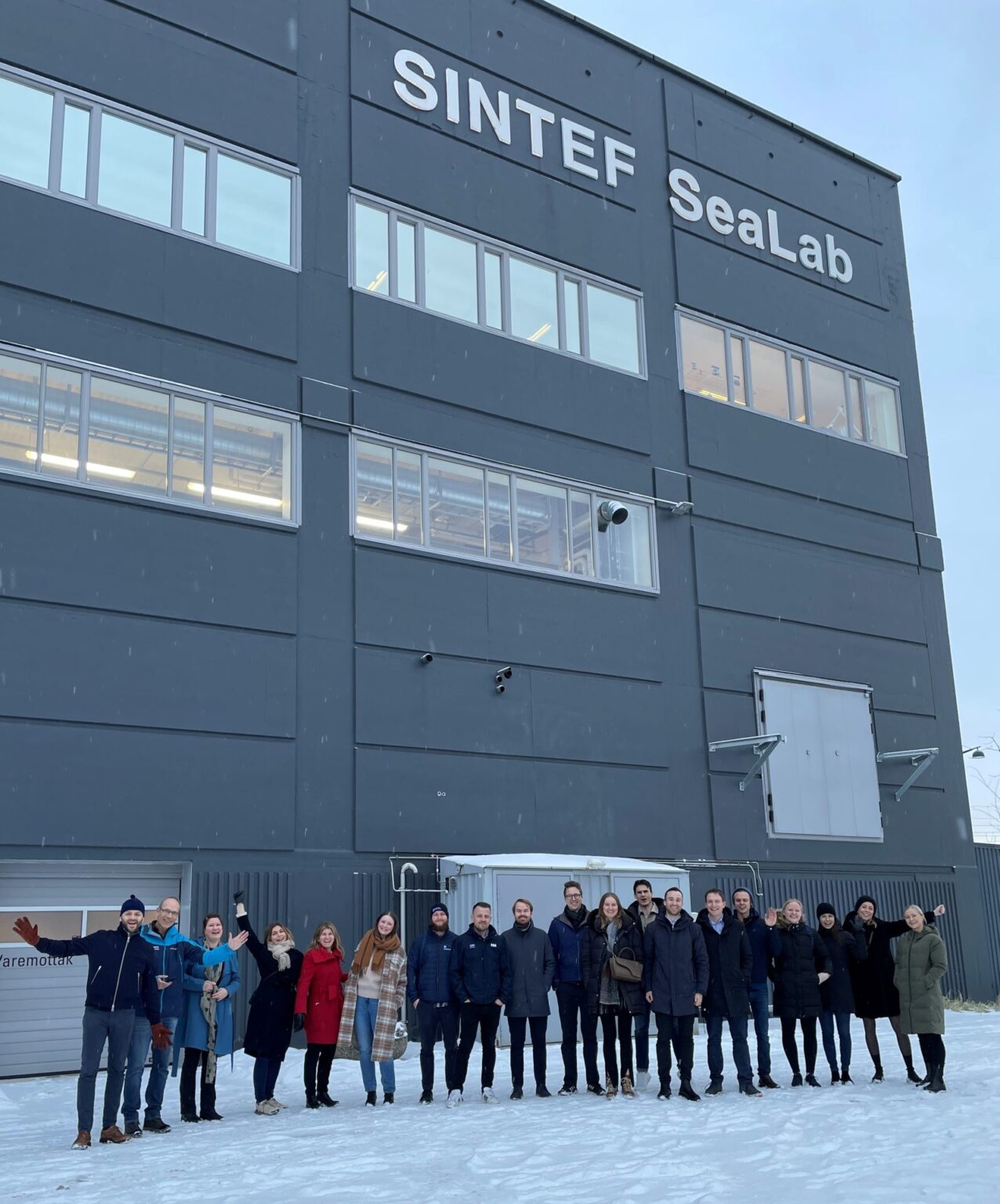Future competence and talent attraction is one of the clusters industrial focus areas, where the main objevtive is to develop and strengthen initiatives for «lifelong learning» and future-oriented competence for new graduates and employees in the industry, as well as strengthen talent attraction for the seafood industry through focused activities and competence projects rooted in the industry.
In Trondheim, SINTEF Ocean had prepared a program for the group with an introduction to the extensive research that they conduct on a broad range of areas related to the ocean industries. 7 enthusiastic researchers drilled down into their various fields of expertise ranging from cutting-edge technologies, exposed aquaculture, better utilization of raw materials, industrialization of micro algae production, as well as opportunities and bottlenecks in seaweed production.

Sintef Ocean invited the group to visit SINTEF Sealab at Brattørkaia and gave a tour of The Norwegian Centre for Plankton Technology and the MORO-lab. Both our hosts and the group were excited that the facilities are now open to visitors.
“What I found most interesting was Silje Forbod’s presentation on seaweed research. Silje gave a truly engaging presentation on opportunities and challenges in the scaling of seaweed production! Sugar kelp is a great resource that can be used in human consumption, as a vegetable. In other regions of the world this is more common, and it will be interesting to follow the development here in Norway moving forward.” – Amalie Kristiansen, Laboratory Engineer, Pharmaq Analytiq AS
The supplier and producer segments of the industry were represented on day two of the module and gave accounts of their own approaches to technology and innovation. Among these were SalMar Aker Ocean, AkvaGroup, Scale AQ, and FishGLOBE. We also got to meet NTNU Oceans and learn about their focus areas and research facilities, as well as the many opportunities for student/industry collaboration. BioMar visited from their head office and technical department located in Trondheim.
“I find the modules interesting because they cover areas that I don’t work with myself on a day-to-day basis. Working in sales, the content of the modules provides me with a broader knowledge that I find useful in my contact with various clients. In this module, I found the thematic on increased utilization and value creation from rest raw materials, both for human consumption, feed ingredients, and protein powders, to be very interesting.” – Steffen Brenna, Manager Sales & Purchases, Sjømathuset AS
All contributors to the module emphasized the importance of the collaboration culture that exists in the Norwegian seafood industry in the field of research and innovation. R&D institutions, suppliers, and producers work together on a broad range of projects to tackle challenges and seek out solutions that contribute to sustainable growth in the industry.
The Seafood Next participants were curious to learn from the presentations and asked questions on technical, strategic, and environmental aspects of the subjects covered. Discussions continued during the breaks and there have without a doubt been established quite a few new points of contact, perhaps for future research innovation projects.

